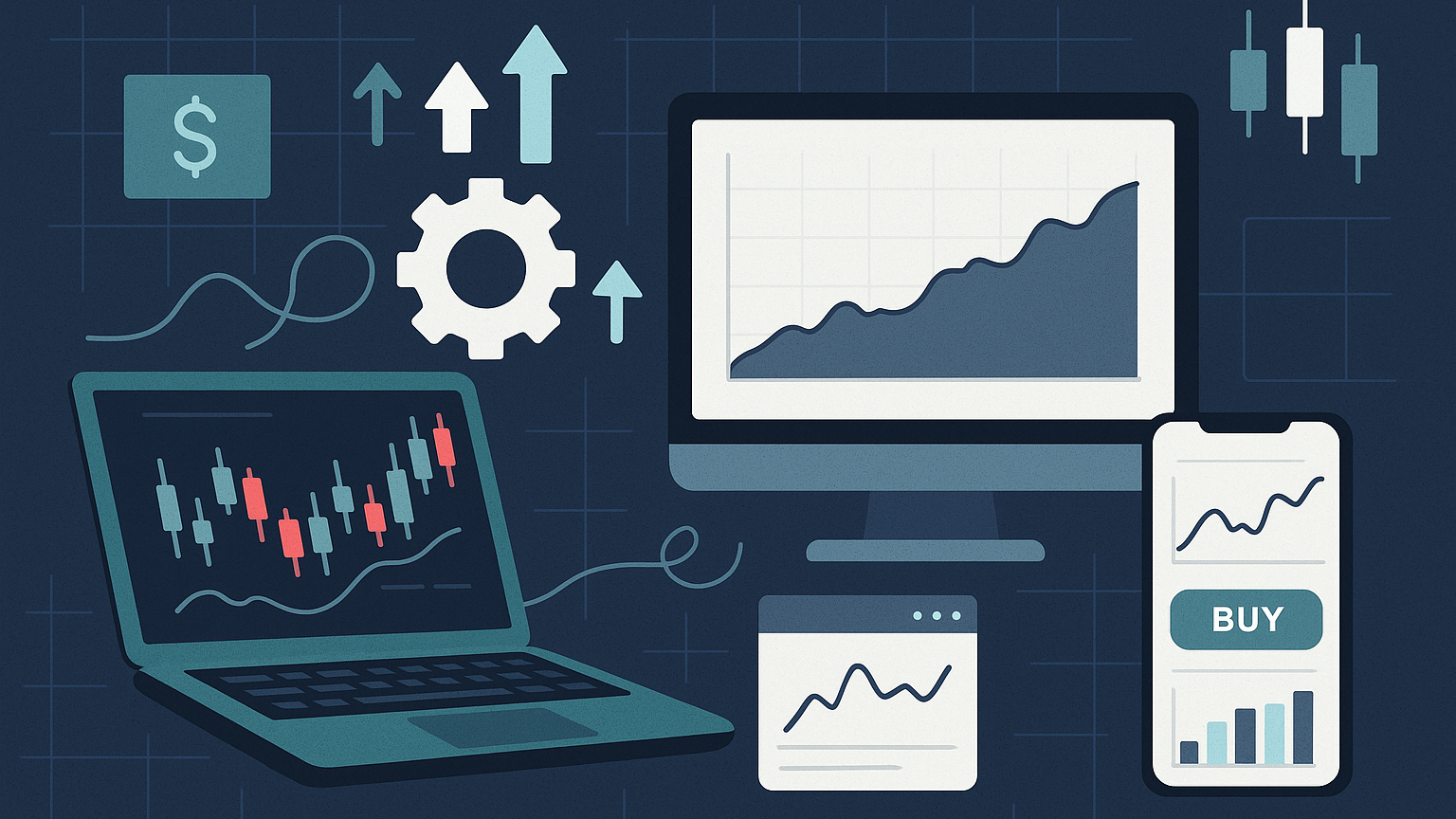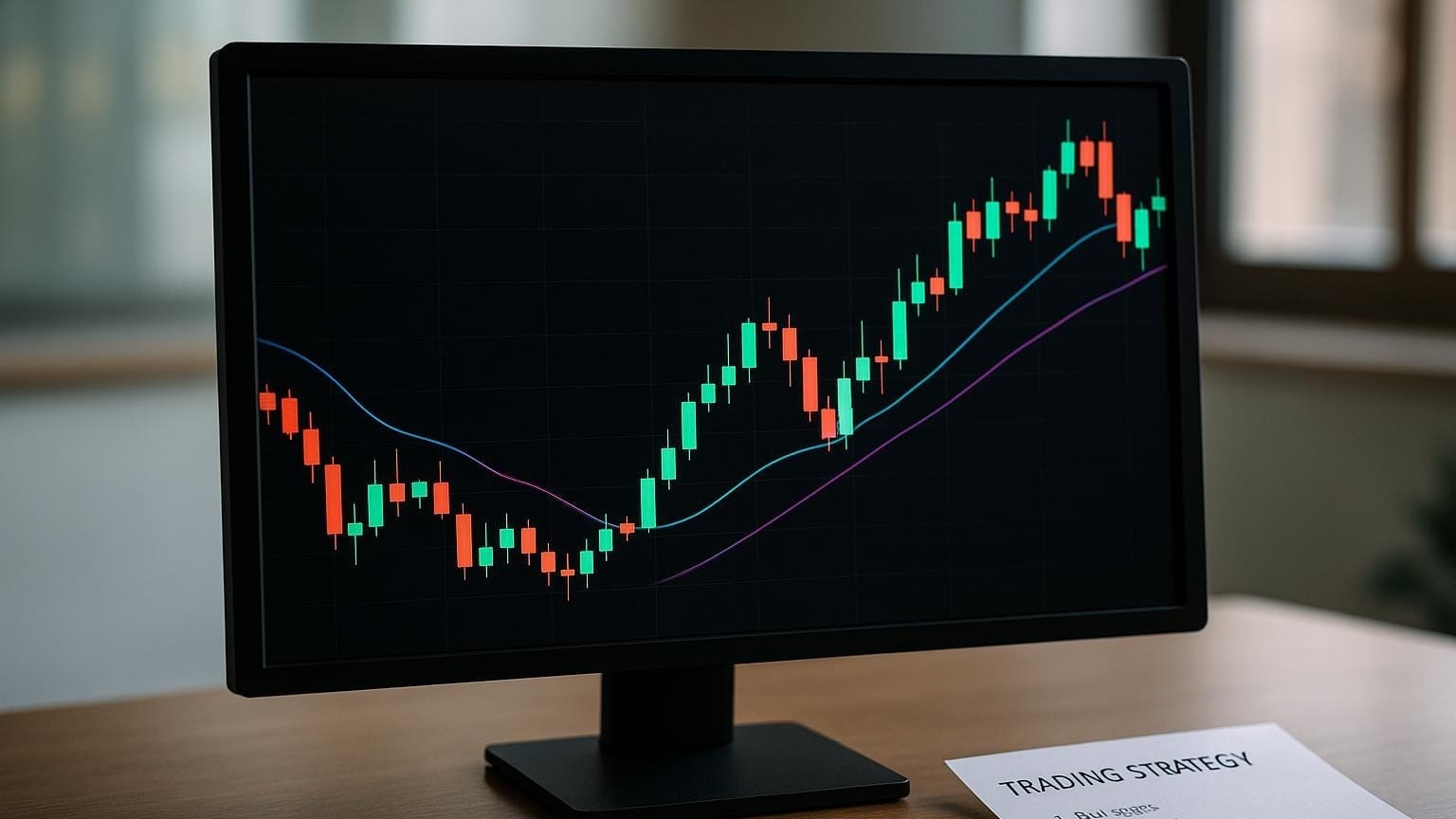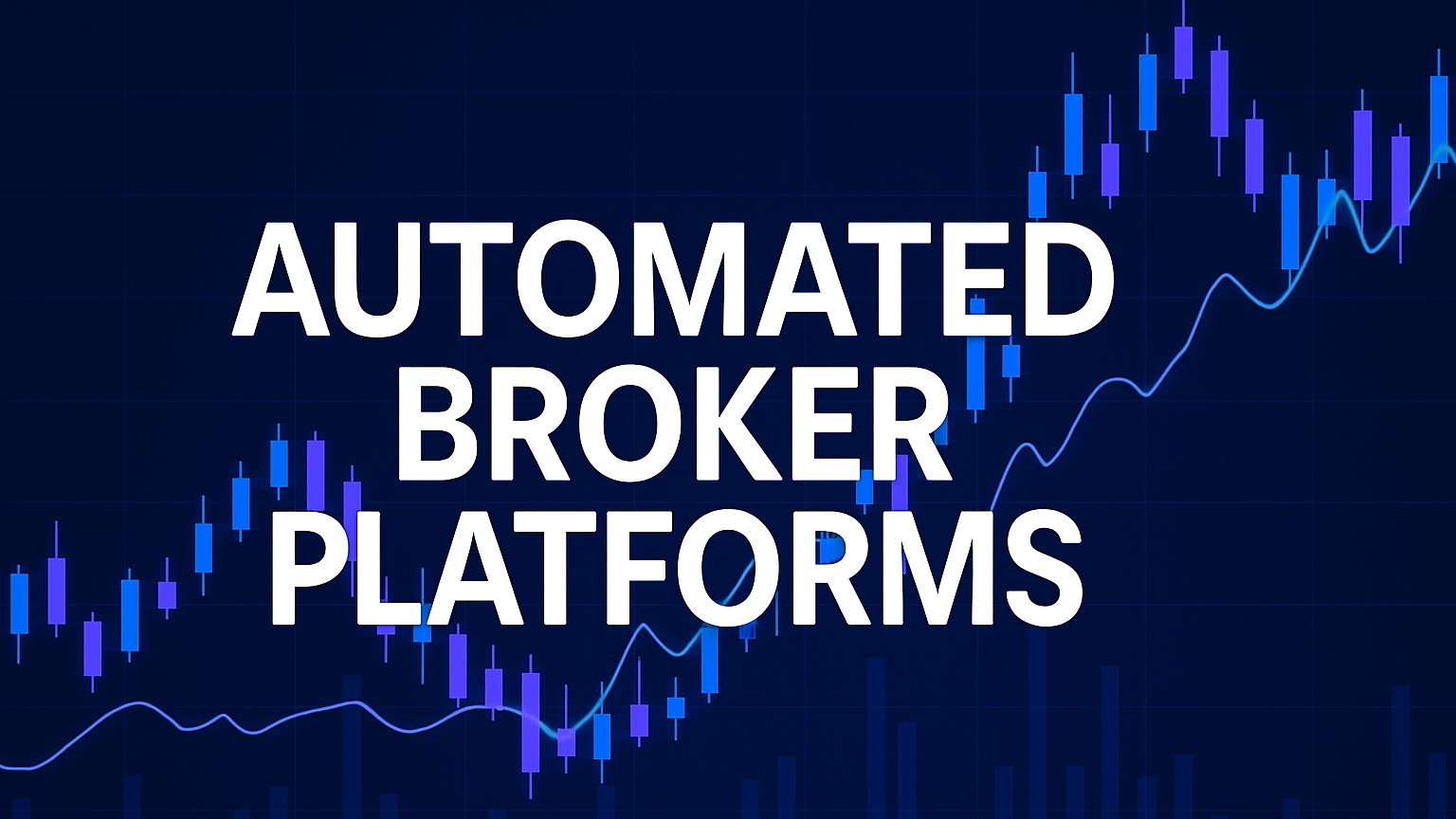Explore essential factors for selecting an algorithmic trading platform or API that aligns with your trading style, goals, and budget.
Algorithmic trading automates trades based on predefined rules, making it faster and more efficient than manual trading. To get started, you'll need a reliable platform or API that fits your trading style, goals, and budget. Here's a quick breakdown:
- Key Features to Look For: Real-time data, backtesting tools, low latency, customization options, and strong risk management.
- Popular Platforms: TradeStation ($60/month), Interactive Brokers (tiered pricing), and QuantConnect (free boot camps for coding).
- API Solutions: Alpaca (commission-free for US stocks), OANDA (no minimum deposit for Forex), and MetaTrader (automation-friendly).
- Cost Considerations: Platforms vary widely in price; expect $29.99-$199/month for most services.
- System Requirements: High-speed hardware, reliable internet, and scalable storage are crucial for smooth operation.
Quick Comparison Table:
| Platform/API | Best For | Key Strengths | Cost |
|---|---|---|---|
| TradeStation | Beginners/Advanced | Advanced tools, EasyLanguage | $60/month |
| Interactive Brokers | High-volume traders | Sophisticated routing, API | Tiered pricing |
| QuantConnect | Coders | Python/C++ support, free boot camps | Free + Add-ons |
| Alpaca | Developers | Commission-free US stocks | Free |
| OANDA | Forex traders | No minimum deposit | Varies |
| MetaTrader | Multi-market traders | User-friendly automation | Varies |
Pro Tip: Always start with a demo account to test features and performance risk-free. Evaluate platforms based on your trading style (e.g., day trading, swing trading) and ensure they meet your technical and budget needs.
Different Trading Platforms for Algo Trading
Assess Your Trading Needs
Before choosing a platform, take a moment to evaluate what you need. Picking the wrong one can result in extra costs and technical barriers that might hurt your trading performance. Make sure your trading goals align with the platform's features.
Trading Goals and Methods
Your trading style and objectives dictate the tools you'll need. Are you aiming to preserve capital, earn steady profits, or outperform benchmarks? Clarifying these goals helps you identify the right platform features.
| Trading Style | Platform Requirements | Typical Use Case |
|---|---|---|
| High-Frequency | Ultra-low latency, advanced orders | Market making, arbitrage |
| Day Trading | Real-time data, fast execution | Momentum trading, scalping |
| Swing Trading | Backtesting, technical indicators | Holding positions for several days |
| Portfolio Management | Risk analytics, multi-asset tools | Long-term investment strategies |
Cost Planning
Platform costs vary widely, so it's important to budget accordingly. Here’s a quick look at pricing for some popular options:
- TradeStation: The TS SELECT package costs $60/month and includes advanced order tools and priority service. Stock trades are free, while options contracts are $0.60 each.
- Interactive Brokers: IBKR Pro uses tiered pricing, ranging from $0.0005 to $0.0035 per share, plus exchange fees. It's a good fit for high-volume traders.
- Trade Ideas: For algorithmic trading, you'll need the premium tier, priced at $167/month or $1,999/year.
Don’t forget to account for hidden costs that can chip away at your profits, such as:
- Spread and commission fees
- Slippage and market impact
- Swap or rollover fees for overnight positions
System Requirements
Your system needs to handle high-speed operations without breaking a sweat. Technical performance is critical.
"Latency remains a key concern in options trading. In today's increasingly competitive markets, the penalty for slowness is steep, and traders whose systems are not designed from the ground up with low latency in mind soon find themselves being picked off by faster competitors."
- Pedro Pinto
To keep up, ensure your setup meets these demands:
- Hardware Configuration: Invest in dedicated CPU cores for trading processes and enough RAM for real-time data. For example, Binance's matching engine processes up to 1.4 million orders per second, showcasing the need for scalability.
- Network Requirements: Use direct market connections to reduce latency and have a backup internet connection to avoid downtime.
- Storage and Processing: Depending on your data needs, opt for SQL databases for structured data or NoSQL solutions for handling large volumes of unstructured market data. Coinbase's performance during the 2021 crypto surge highlights the importance of scalable systems.
Must-Have Platform Features
When choosing a platform for algorithmic trading, focus on these essential features:
Testing and Optimization Tools
Testing tools are critical for evaluating strategies before putting real money at risk. For example, QuantConnect processes over $45 billion in notional volume each month and supports the creation of 2,500 new algorithms by its users every month.
Key components to look for:
| Testing Component | Purpose | Key Benefit |
|---|---|---|
| Backtesting Engine | Tests strategies using historical data | Assesses performance across various conditions |
| Parameter Optimization | Adjusts strategy variables | Pinpoints settings for better returns |
| Robustness Testing | Simulates diverse scenarios | Avoids overfitting and ensures reliability |
LuxAlgo’s AI Backtesting platform is a good example of an AI agent for creating trading strategies. It provides real-time strategy evaluation across different timeframes. The Ultimate plan even includes advanced optimization engines to fine tune signal settings, giving traders a systematic way to improve their strategies.
Remember, reliable market data is a crucial part of any testing process.
Market Data Quality
The quality of market data can make or break your trading strategies. Studies show that traders using real-time data can execute trades up to 20% faster than those relying on delayed feeds.
Key factors to evaluate:
1. Data Accuracy and Timeliness
Real-time data is a must-have for 73% of institutional investors.
2. Coverage Options
Look for platforms offering a wide range of data sources:
- Direct exchange feeds for low latency
- Consolidated feeds for broader market insights
- Historical data for thorough backtesting
- Alternative data sources for unique opportunities
Custom Trading Options
Customization allows traders to build strategies tailored to their needs. Build Alpha, for instance, offers over 7,000 market signals to integrate into trading plans.
"Validation is where the true edge lies and why Build Alpha has a large suite of advanced validation and robustness tests to stress test every strategy before a trade is made." - Build Alpha
Key customization features to prioritize:
- Strategy Implementation: Write custom indicators or tweak existing ones
- Order Execution: Control order types, routing, and execution logic
- Risk Management: Adjust position sizing and stop-loss settings
- Alert Systems: Set up notifications for market events or strategy triggers
QuantConnect stands out by offering cloud-based research terminals that provide access to financial, fundamental, and alternative data. This level of customization empowers traders to create and refine strategies that align with their goals.
Platform and API Options
Once you've identified your trading needs and must-have features, it's time to explore some of the top trading platforms and APIs to determine which one suits you best.
Major Trading Platforms
When it comes to algorithmic trading, Interactive Brokers and TradeStation are often at the forefront.
- TradeStation is highly rated, earning 4.5 stars from over 17,300 iPhone users. It features the EasyLanguage programming interface and advanced scanning tools, making it suitable for both beginners and seasoned traders.
- Interactive Brokers is known for its robust API integration, sophisticated order routing, and extensive educational materials. However, its margin interest rates are on the higher side.
Another standout is QuantConnect, which has hosted over 100,000 algorithms. Supporting Python and C++, it also offers free boot camps for traders who want to improve their coding skills.
Trading API Solutions
For those who prefer API-driven trading, several platforms cater specifically to developers looking for streamlined, code-focused solutions.
- Alpaca is a leader in API-first trading. It offers commission-free trading on US stocks and expanded its services to non-US residents in July 2020. Alpaca is ideal for developers building custom trading systems, as it operates without a traditional client interface.
| Platform | Key Strength | Best For |
|---|---|---|
| Alpaca | Commission-free US stocks | Developers |
| OANDA | No minimum deposit | Forex traders |
| MetaTrader | User-friendly automation | Multi-market traders |
OANDA stands out in the forex market with its variety of platform options, including OANDA Web, Mobile, TradingView, and MetaTrader4 integration. Its no-minimum-deposit policy makes it accessible to traders with smaller budgets.
Feature and Price Comparison
Comparing features and costs is crucial to choosing the right platform. Pricing for these services ranges from Alpha Vantage's $29.99/month to Polygon.io's $199/month.
| Service Tier | Features | Monthly Cost |
|---|---|---|
| Basic (Alpha Vantage) | 5 API requests/minute | $29.99 |
| Mid-Range (EODHD) | All-in-One Package | $79.99 |
| Premium (Polygon.io) | High-frequency trading | $199.00 |
"94% of practice management professionals find limited technology integration creates productivity challenges." - NASDAQ
For traders seeking advanced tools, NinjaTrader provides excellent charting and backtesting capabilities. Meanwhile, MetaTrader offers a blend of an intuitive interface and automation features. Pairing these options with your specific trading goals can help you create an efficient algorithmic trading setup.
Selection Process
Once you've identified your trading needs and the must-have features, follow these steps to choose the right platform.
Try Demo Accounts First
Before committing any money, start with demo accounts. These allow you to explore platform features and test performance in a risk-free environment. For example, platforms like TradeStation and Interactive Brokers provide demo accounts that closely mimic real trading conditions.
Here’s what to focus on during testing:
- Test trading algorithms under different market scenarios.
- Check execution speed, especially during busy trading periods.
- Ensure API connections remain stable in varying market conditions.
Growth and Support Options
Look for platforms that can grow with you and offer strong support. For instance, uTrade Algos provides both customizable strategies and pre-made options like "uTrade Originals", making it a good fit for traders at various skill levels.
Key support features to consider:
| Feature | What to Look For |
|---|---|
| Technical Support | Round-the-clock availability with fast response times |
| Educational Tools | Detailed guides, tutorials, and other learning resources |
| Community Access | Active forums and platforms for sharing strategies |
| Updates | Regular improvements and new features |
Keep these factors in mind as you narrow down your options.
Decision Checklist
To finalize your decision, use this checklist to ensure the platform meets your requirements:
- Technical Needs: Confirm language compatibility, data feed quality, reliable order execution, and effective risk management tools.
- Cost Considerations: Compare subscription fees, data costs, commission structures, and API charges across platforms.
- Support Quality: Assess customer service availability and responsiveness. For example, LuxAlgo provides 24/7 live support and educational resources, with pricing options ranging from $24.99 to $59.99 per month, giving you flexibility as your needs change.








